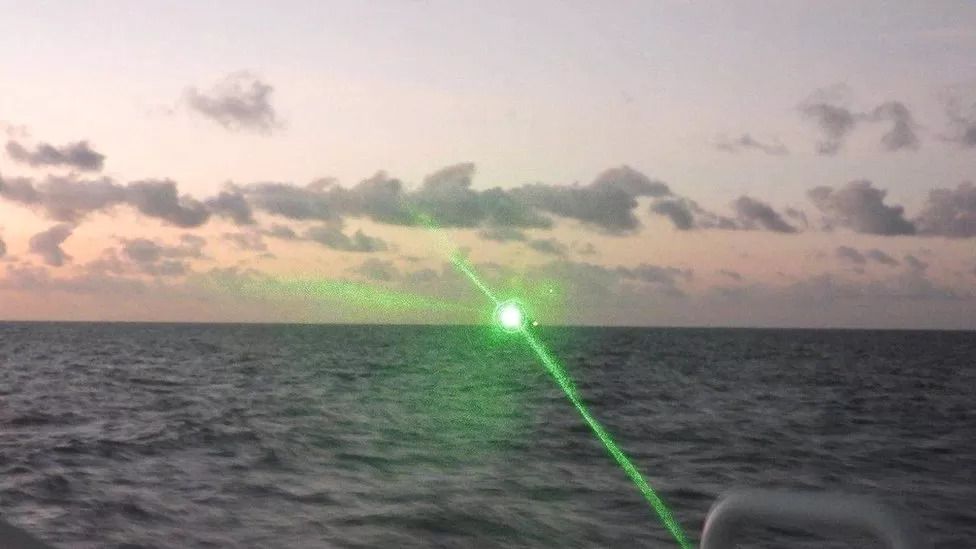Gray Zone Tactics Playbook: Optical Weapons

Optical weapons are non-lethal but potentially dangerous weapons in China's gray-zone arsenal. China's navy and coast guard have been documented using lasers and stroboscopic lights as a harassment tool and a weapon of psychological warfare to confuse or incapacitate personnel on board both ships and aircraft.
Because optical weapons can have both physical and psychological effects, their use against vessels and aircraft is hazardous, especially when they impede a crew's ability to navigate and react to contingencies.
As detailed in our "Going Dark" playbook entry, a China Coast Guard cutter used a laser to harass a Philippine resupply escort mission on February 6th, 2023:
The Philippine Coast Guard later clarified that this was the second time this had occurred during a resupply mission.
A laser was also used by a Chinese Type 22 missile boat against a Philippine Bureau of Fisheries and Aquatic Resources surveillance plane on three occasions on October 1, 2024.
It's not only Philippine ships and aircraft that have been so targeted. China has also employed lasers against U.S. and Australian aircraft since at least 2018, as documented in incidents over the Pacific Ocean, the South China Sea, the East China Sea, the Arafura Sea and near the Horn of Africa.
The use of lasers is not necessarily considered illegal under international conventions, as long as they do not cause permanent blindness, in which case they are prohibited under the Convention on Certain Conventional Weapons
The U.S. military—which refers to them as "non-lethal optical distractors" or "dazzlers"—considers lasers an essential capability to "minimize fatalities, protect the innocent and limit collateral damage" when the alternative is lethal force, with the caveat that:
"Prior to fielding, all previously and currently fielded lasers or distracter devices have undergone legal reviews to ensure compliance with obligations assumed by the U.S. under applicable treaties, customary international law, and the law of armed conflict."
There are, however, no known examples of the U.S. military or coast guard deploying lasers against another country's ships, aircraft or personnel.
Dazzlers are distinguished from high-powered directed energy systems, which can be used to destroy sensitive electro-optical sensors as an electronic warfare component. Any use of directed energy weapons in gray-zone warfare would be considered highly dangerous and a very serious escalation.
Stroboscopic lights were used during the June 17th, 2024 incident at Second Thomas Shoal as can be seen at the 1:54 mark of the video below:
Editor's Note: This article has been updated. It was first posted under the title "Gray Zone Tactics Playbook: Laser Dazzlers", but has since been expanded to include other types of optical weapons.




